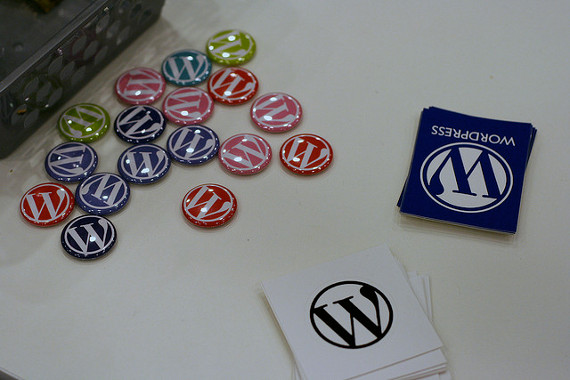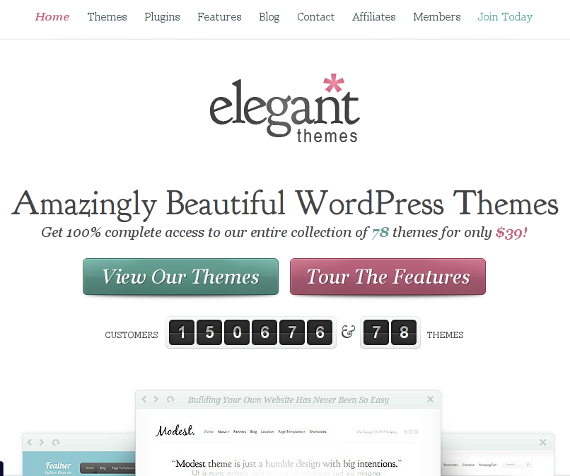Speaking of WordPress themes, the market is filled with options. You have free themes, premium themes, themes created by design agencies, themes created by casual designers just to kill time, themes created with passion and, sadly, themes containing spam and shady links. However you look at it, I guess the point is clear:
WordPress themes = way too many!
In this article, we shall be taking a look at the current state of WordPress themes.
WordPress Themes: The Trends
So, what are the current trends when it comes to WordPress themes?
Note: The word ‘trends’ does not essentially mean design aspects; it may also refer to market conditions and usage statistics.
![[Infographic] The State of WordPress Themes: Current Trends And Classifications Photo %tutke](https://cdn.idevie.com/wp-content/uploads/2013/01/wp-main.jpg)
- Trends in Design: Like it or not, minimalism and responsive web design trends have almost driven ornate and flowery elements into a corner. Thus, when it comes to WordPress themes, clean, minimal and responsive work is the way to go!
- Purpose of Themes: WP, being the most popular CMS, is used for multiple purposes: to run an online store, a personal blog, an art portfolio, a news website, and so on. Naturally, WP themes have adapted to such diverse usage: you can now find themes that are meant specifically for eCommerce, personal blogs, news/magazine websites, job boards, and so on.
- Market Saturation: The actual level of market saturation when it comes to WP themes happens to be a product of the purchasing power of the users, as well as market competition. Since the theme providers are too many, most users simply opt for the most popular option. Now, keeping the purchasing parity in mind, not everyone will be able to afford a club membership with ten theme providers. As a result, they will settle with just one theme provider, possibly one that has a huge collection of themes and offers a clean track-record of serving customers. This further means that big theme providers, like WooThemes and ElegantThemes, keep getting bigger and smaller ones are not able to grow at exponential rates.
- Response to Saturation: Since most new theme provider shops and startups are not becoming WooThemes overnight, an alternate route has gained traction: theme marketplaces! ThemeForest and Mojo Themes have been providing good quality themes created by talented folks from around the world. This ensures that the end users get decent themes at budget-friendly rates, and theme makers get to earn a profit without being shadowed by the bigger players.
- Counter-Saturation: Ever heard of John Saddington? Yes, the guy behind Standard Theme. His success in terms of WP themes is based on one creation of gigantic proportions. Not everyone gets to be Saddington obviously, but the point is clear: in spite of a highly competitive market, making one’s mark is not impossible. Another case is that of A J Clarke who, unlike Saddington, releases numerous themes (both paid and free) regularly. Clarke has earned a name not by being gigantic, but simply by being consistent.
WordPress Themes: The Classification
For the sake of discussion, I shall be dividing WordPress themes into three categories: paid (premium) themes, free themes and shady themes. Of course, I’ll be overlooking the rather strange coinages such as Freemium (free+premium=WHAT?) themes. Let’s just stick to the proper route, shall we?

Now, having divided the current state of themes on the basis of payment, we can further sub-divide them on the basis of their source of availability. Thus, free themes can have three sub-heads: themes available via the official repository, and occasional free themes available from premium theme makers, and lastly, free themes created by designers/developers but not added to the repository. Along similar lines, premium themes can have two sub-heads: themes available directly from premium theme makers, and themes available via marketplaces.
And before I forget, the distinction is always blurry. Still, I shall try to stick to the above divisions throughout the article.
Free WordPress Themes
Who doesn’t like free stuff? Seriously, who doesn’t?
As of now, the official WordPress repository claims to have a little over 1600 themes on offer. Some good, some bad, but all for free! (Tweet this)
Going beyond the official repository, we also have free themes released by premium theme stores: either for promotion, or on a special occasion such as the theme store’s birthday or a festival, or simply just to say thank you to their users. Some good examples include the likes of Leatherly by ColorLabs, Meeta by WPZOOM, and Mystile by WooThemes. It must also be noted that often these themes find their way into the official repository as well; yet, I’ll retain them in a separate category simply because overall, they are in the minority.

Leatherly: A Free Theme by ColorLabs
And lastly, we have a section of free themes that are released by talented designers and developers and often do not find their way into the repository (for whatever reasons). Such themes do not really have a timeline of release — but you can expect some level of forum or comment thread support. Often, theme developers offer a mix of both free and premium themes, and naturally the free ones are not as well curated as the premium ones. Still, at the end of the day, even the free lot can be pretty impressive, as is the case with themes created by FearlessFlyer.
Premium WordPress Themes
Now, coming to premium themes. As mentioned above, I have broadly classified them under two sub-categories.
The first sub-category consists of themes that are available directly via the premium theme makers. Again, theme shops such as WooThemes, ElegantThemes and ThemeFurnace are good examples of this trend. The second sub-category consists of theme designers who market their themes via theme marketplaces, such as ThemeForest and Mojo Themes. This second breed of theme designer generally includes freelancers and aspiring developers/designers who still haven’t grown to the level of a full fledged theme shop in their own right.

Now, in terms of numbers, who wins? Let’s try to put together the total number of free themes on the Internet: the official repository has over 1600, and if you add another 1000 to it to account for the free themes released by designers and developers of their own accord, you’ll get an impressive number of 2500-2600. That’s pretty decent for freebies, ain’t it?
The premium themes, on the other hand, are in the majority. Even ThemeForest is nearing 2200 single-handedly. Add to it around 300+ themes from Mojo Themes, plus the themes available via themes clubs and template makers (say, 2000+), and you’ll have a whopping number of 4200, and counting! (Tweet this)
This does not include the themes released by template factory shops (I personally find almost all themes released by any given template factory shop to be semi-identical with minor variations, so I’ll not disgrace the hard-work done by premium theme makers by mentioning factory themes in the same breath).
Oh wait, we are forgetting the third category!
Shady and Spammy Themes
All good things should be followed by bad ones (or was it the other way round…bad things to be followed by good…ah well, never mind).
Basically, shady and spammy themes include ones that have encrypted code or hidden adverts. If you remove the links to those adverts, your theme will stop functioning (and most likely disallow you from accessing your WP admin panel either). Obviously, such compulsive linking to undesirable websites is not something you’d wish to have your blog identified with, and thus it is best to avoid such themes.

The Hall of Shame? Naturally, we will not be linking to any of them, but here is a rather small list of theme websites that you can avoid (be warned: there are many more out there):
- smthemes.com
- wpthemesfree.com
- blogstheme.com
- templatesbrowser.com
The above list is not exhaustive: as a rule, you should stop Googling “awesome free WP themes that make my website rock”, and quit relying on torrents/warez too much. You may also consider looking up this article that I wrote sometime back.
And.. an Infographic!
Ah yes! Who doesn’t like infographics? Michael John Burns has prepared a special one, related to WordPress themes. Considering the fact that you’ve already spent a good deal of time reading this article, I’ll let the infographic to speak for itself! Oh, and be sure to click the image for an enlarged version. :-)
